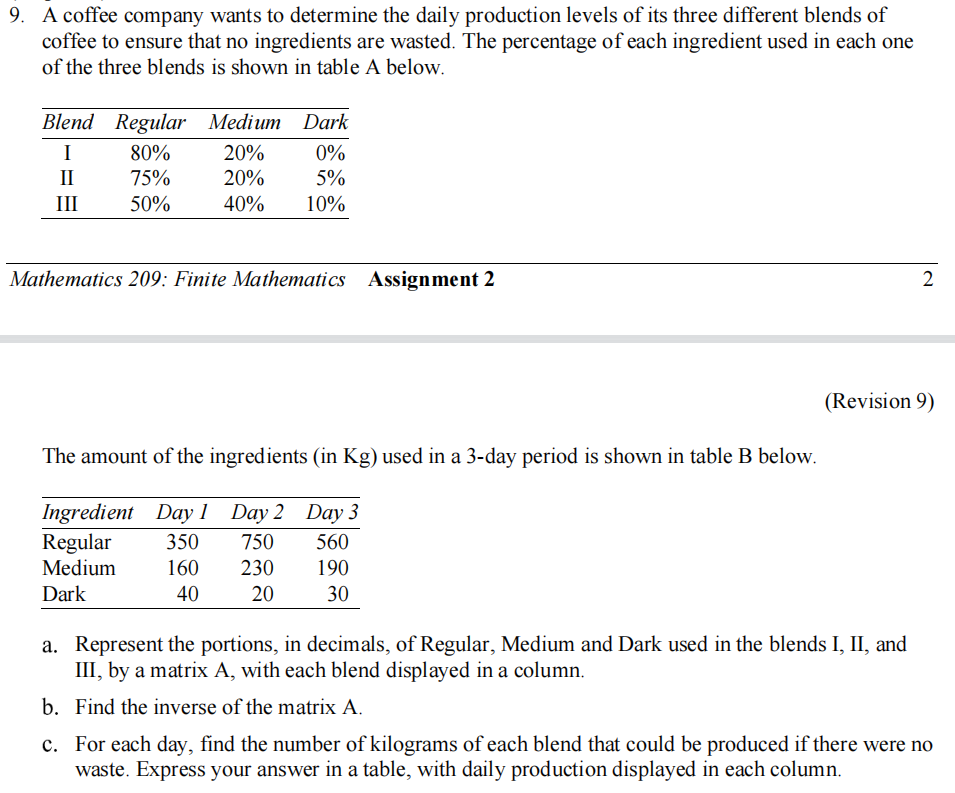9. A coffee company wants to determine the daily production levels of its three different blends of coffee to ensure that no ingredients are wasted. The percentage of each ingredient used in each one of the three blends is shown in table A below. Blend Regular Medium Dark I 80% 20% 0% II 75% 20% 5% III 50% 40% 10%
9. A coffee company wants to determine the daily production levels of its three different blends of coffee to ensure that no ingredients are wasted. The percentage of each ingredient used in each one of the three blends is shown in table A below. Blend Regular Medium Dark I 80% 20% 0% II 75% 20% 5% III 50% 40% 10%
Linear Algebra: A Modern Introduction
4th Edition
ISBN:9781285463247
Author:David Poole
Publisher:David Poole
Chapter2: Systems Of Linear Equations
Section2.4: Applications
Problem 28EQ
Related questions
Question

Transcribed Image Text:9. A coffee company wants to determine the daily production levels of its three different blends of
coffee to ensure that no ingredients are wasted. The percentage of each ingredient used in each one
of the three blends is shown in table A below.
Blend Regular Medium
Dark
I
80%
20%
0%
II
75%
20%
5%
III
50%
40% 10%
Mathematics 209: Finite Mathematics Assignment 2
2
(Revision 9)
The amount of the ingredients (in Kg) used in a 3-day period is shown in table B below.
Ingredient Day 1 Day 2 Day 3
Regular
350 750
560
Medium
160 230
190
Dark
40
20
30
a. Represent the portions, in decimals, of Regular, Medium and Dark used in the blends I, II, and
III, by a matrix A, with each blend displayed in a column.
b. Find the inverse of the matrix A.
c. For each day, find the number of kilograms of each blend that could be produced if there were no
waste. Express your answer in a table, with daily production displayed in each column.
Expert Solution
This question has been solved!
Explore an expertly crafted, step-by-step solution for a thorough understanding of key concepts.
Step by step
Solved in 3 steps with 4 images

Recommended textbooks for you

Linear Algebra: A Modern Introduction
Algebra
ISBN:
9781285463247
Author:
David Poole
Publisher:
Cengage Learning

Algebra for College Students
Algebra
ISBN:
9781285195780
Author:
Jerome E. Kaufmann, Karen L. Schwitters
Publisher:
Cengage Learning


Linear Algebra: A Modern Introduction
Algebra
ISBN:
9781285463247
Author:
David Poole
Publisher:
Cengage Learning

Algebra for College Students
Algebra
ISBN:
9781285195780
Author:
Jerome E. Kaufmann, Karen L. Schwitters
Publisher:
Cengage Learning
